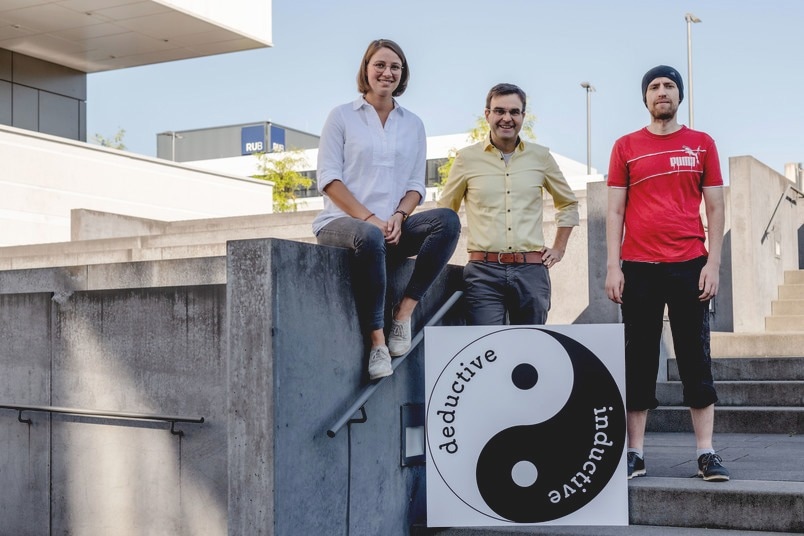
They have brought together the seemingly incompatible inductive approach of machine learning with deductive logic: Stephanie Schörner, Axel Mosig, and David Schuhmacher (left to right). Image Credit: Ruhr-Universität Bochum, Marquard.
It is possible to train artificial intelligence (AI) to determine whether a tissue image contains a tumor. However, up until today, it has been unclear exactly how it decides. A team from the Research Center is developing a novel strategy for Protein Diagnostics (PRODI) at Ruhr-Universität Bochum that will make an AI’s judgment clear and therefore reliable.
Researchers under the direction of Professor Axel Mosig developed the method, and it was published online on August 24th, 2022, in the journal “Medical Image Analysis.”
Professor Andrea Tannapfel, director of the Institute of Pathology, Professor Anke Reinacher-Schick, an oncologist at the St. Josef Hospital of the Ruhr-Universität, and Professor Klaus Gerwert, a biophysicist and the founding director of PRODI, collaborated on the research with bioinformatics expert Axel Mosig.
The team created a neural network or artificial intelligence that can determine whether a tissue sample includes a tumor. To achieve this, they supplied the AI with a vast number of photos of microscopic tissues, some of which had tumors and others did not.
Neural networks are initially a black box: it’s unclear which identifying features a network learns from the training data.
Axel Mosig, Bioinformatics Expert, Ruhr-Universität Bochum
Unlike human experts, they lack the skill to explain their decisions. “However, for medical applications, in particular, it’s important that the AI is capable of explanation and thus trustworthy,” adds bioinformatics scientist David Schuhmacher, who collaborated on the study.
AI is Based on Falsifiable Hypotheses
Hence, the understandable AI developed by the Bochum team is predicated on falsifiable hypotheses.
Artificial intelligence typically employs the inductive reasoning principle, whereby it builds a general model from particular observations—the training data—and then uses that model to evaluate all subsequent observations.
Activation Map Shows Where the Tumor is Detected
At first glance, inductive AI and the deductive scientific method seem almost incompatible.
Stephanie Schörner, Physicist, Ruhr-Universität Bochum
Their cutting-edge neural network creates an activation map of the microscopic tissue image in addition to classifying whether a tissue sample has a tumor or is tumor-free.
The hypothesis upon which the activation map is built, namely that the activation obtained from the neural network correlates precisely to the cancer locations in the sample, is testable. Molecular techniques that are site-specific can be employed to verify this claim.
“Thanks to the interdisciplinary structures at PRODI, we have the best prerequisites for incorporating the hypothesis-based approach into the development of trustworthy biomarker AI in the future, for example, to be able to distinguish between certain therapy-relevant tumor subtypes,” concludes Axel Mosig.
Journal Reference
Schuhmacher, D., et al. (2022) A framework for falsifiable explanations of machine learning models with an application in computational pathology. Medical Image Analysis. doi.org/10.1016/j.media.2022.102594.